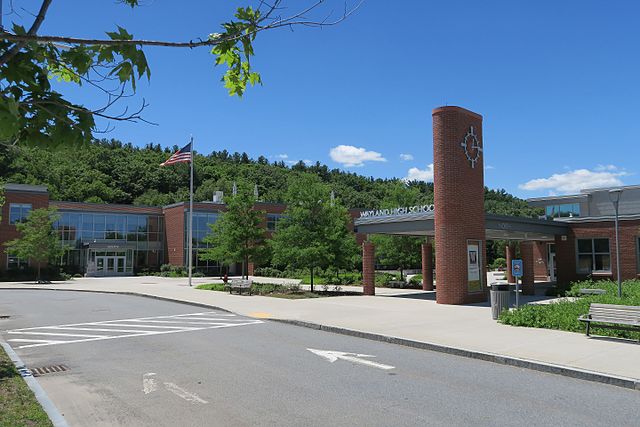Wayland High School’s ranking by the numbers
Credit: John Phelan
Wayland High School is planning to alter the procedures they administer final examinations to students. Traditional exams for a few of the major academic subjects will be scratched for “exhibition days.”
February 2, 2017
With the week of midterms behind them, Wayland students have successfully completed the first semester of the 2016-2017 school year and the rigorous exams that marked its completion. Students’ scores on the midterms won’t simply provide insight into how much they’ve learned in their respective semesters; they will also reflect the successes of teachers, and, ultimately, the school in educating the youth of Wayland. There may be reason to be optimistic regarding the school’s efforts, for recent releases of unofficial school rankings all place Wayland High School in the top 20 of public high schools in the state – number 19, according to US News (24 with private/charter schools included), and number 10 according to Niche. Yet more ranking services yield similar results, but none are without a certain measure of ambiguity regarding the specific details behind the rank. In order to understand the source of such rankings to the best of our ability, it becomes necessary to investigate individual statistics; it becomes necessary to explore Wayland High School by the numbers.
Enrollment
Before learning about assessment results of WHS, it is important to know who goes to the school. According to a 2016 profile by the Massachusetts Department of Elementary and Secondary Education, the WHS student body is comprised of 28.3% minority students, while the remaining 71.7% of students are classified as white. By contrast, 37.3% of students in the state of Massachusetts are classified in minority ethnic groups.
These statistics directly influence a school’s ranking in the state – a higher diversity positively impacts the overall score. With such data, Niche assigned WHS a B- in diversity.
Academic Assessment:
The core information regarding a school’s position in a ranking is its academic attributes. In terms of understanding core subjects, the Massachusetts Department of Elementary and Secondary Education profile states that 99% of the student body scored proficient or higher on the English MCAS, while 97% scored proficient or higher on the Mathematics MCAS.
The SAT also reflects results in these core subjects. In the 2015-2016 school year, average scores of Wayland students were 595 in reading, 593 in writing and 619 in math. For comparison, the Department of Elementary and Secondary Education also lists the state averages: 509 in reading, 497 in writing and 522 in math.
AP test participation and results also make up some key statistics when assessing Wayland’s academic characteristics. The Department of Elementary and Secondary Education states that in the 2015-2016 school year, 203 Wayland students took a total of 409 AP tests. This is above the average amount of participants per school in Massachusetts, which falls at 162 test takers.
Out of those 409, 93% of tests received passing grades of 3 or above. The state average for passing grades was 67%.
Such statistics act as a stable foundation for assessing Wayland’s academics. Niche’s findings resulted in an A+ for academic prowess.
In addition to these facts, it is worth noting that WHS has a 99% graduation rate, a 12:1 student-teacher ratio, and is ranked in the 87th percentile among public schools by the Massachusetts Department of Elementary and Secondary Education based on performance by students.
All of these statistics together provide insight into the characteristics of our school and help us understand how WHS falls where it does on the rankings. Together, they paint the picture of Wayland High School by the numbers.





![Last Wednesday, the Wayland School Committee gathered to discuss a number of topics regarding the health curriculum and Innovation Career Pathway course. Another large topic of conversation was the ways to potentially mitigate distracting cell phone usage. "These [phones] are going to distract your learning and social relationships," Superintendent David Fleishman said. "That's concrete right there."](https://waylandstudentpress.com/wp-content/uploads/2025/06/Screenshot-2025-06-04-at-9.49.31 PM-1200x886.png)



























![Troy Hoyt finishes the Boston Marathon, running for the Hoyt Foundation. T. Hoyt is the son of Hoyt Foundation CEO Russ Hoyt.
“[Running a marathon] might seem like a big thing, when it’s presented to you at first, but if you break it up and just keep telling yourself, “Yes, you can,” you can start chipping away at it. And before you know it, you’ll be running the whole 26 miles, and you won’t even think twice about it.” T. Hoyt said.](https://waylandstudentpress.com/wp-content/uploads/2025/04/C36E8761-1CBB-452E-9DF2-543EF7B1095E_1_105_c.jpeg)













































